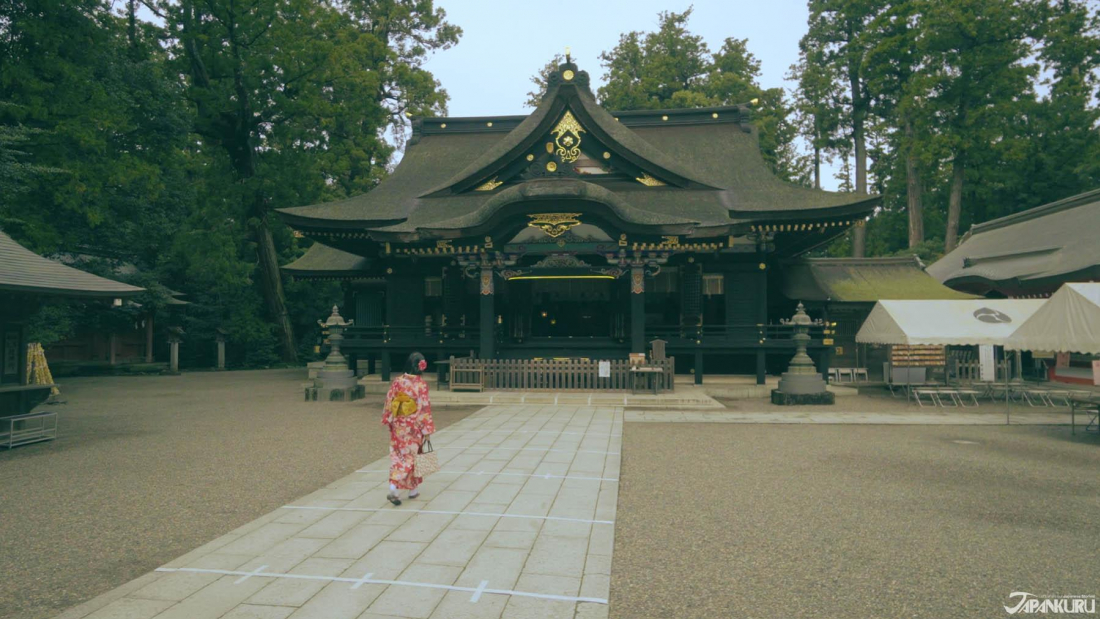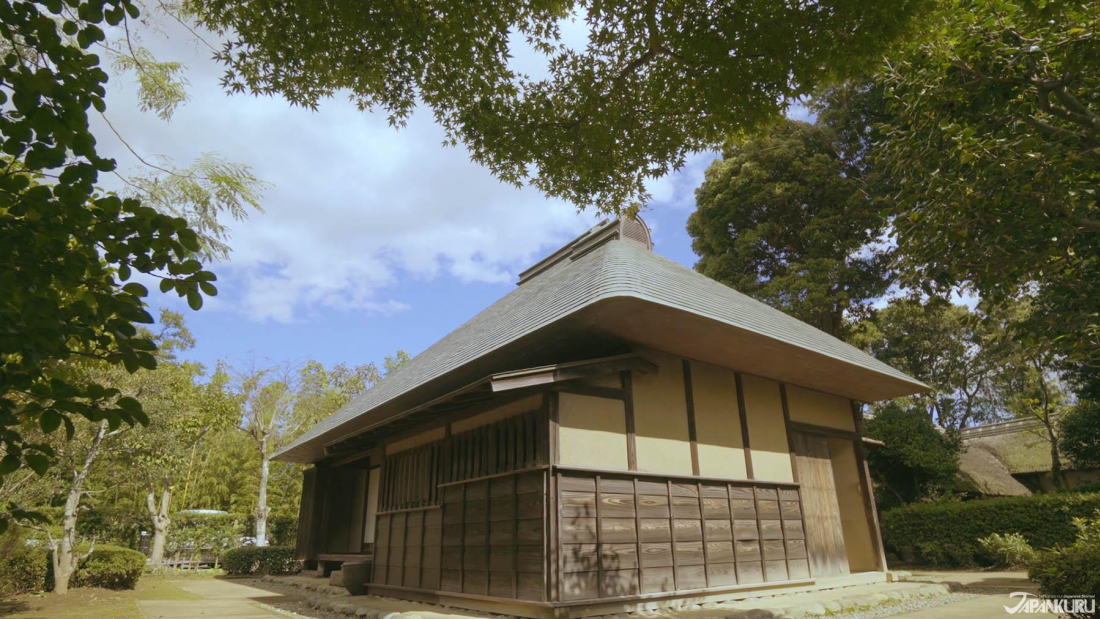
CONTENTS
Arriving at Narita Airport? Don’t miss out on the fun by rushing to Tokyo! Stick around for some great Chiba sightseeing.
Does the name "Narita Airport" make you think of Tokyo? Then you might be surprised to learn that the airport isn't in Tokyo at all, but in the neighboring prefecture of Chiba! Only one of the two "Tokyo airports" is actually in the city itself, and the tens of thousands of travelers who pass through Narita Airport each day and continue straight to Tokyo are missing out! Narita Airport's location in the northern part of Chiba Prefecture is surrounded by smaller towns with a less urban feeling, making it a great place to travel and see the sights. On your way into Japan, or perhaps at the end of your trip, spend a night or two near the airport and enjoy the temples and shrines, the samurai history and ancient archeology, the traditional kimono and tea ceremony, and even the sake breweries found around Narita Airport in Chiba!
① Visiting Sakae
Start your trip with a blast from the past! In the town of Sakae is a unique open-air museum called Boso no Mura (房総のむら), where visitors can stroll the streets of an Edo era (1603-1868) village. The museum aims to recreate a neighborhood from the Boso Region, adding a little local flair, and the buildings are a collection of restored historical structures and newer reproductions. Visitors can choose to rent one of any number of costumes from the dedicated Cosplay Annex, to wear while exploring, making the experience feel a lot like stepping out of a time machine. Walk down the paths and admire the old-fashioned storefronts and houses while wearing a beautiful kimono, a traditional samurai outfit, or even a ninja costume!
If you want to dive into the past and get a little more hands-on, Boso no Mura offers a number of workshops for traditional crafts and other special experiences. Stop in at the spacious tea house for the chance to try a tea ceremony and sip on a fresh cup of matcha.
Or pick up a hammer at the blacksmith's and craft your own little iron letter opener to bring home as a keepsake!
Boso no Mura (房総のむら)
Ryukakuji, Sakae, Imba District, Chiba
Hours: 9:00 – 16:30
Cosplay Rentals: 10:00 – 15:00 / Returns: ~16:00
Official Website (jp)
② Visiting Katori
While Boso no Mura recreates the whole old-fashioned atmosphere of Edo era Japan, many of the buildings lining the Ono River in the Sawara area of Katori are the real thing, adding old-fashioned elegance to the stone-paved streets. Thanks to the pretty buildings, quaint bridges, and the boats sliding by on the water, Katori is another great option for trying on a kimono and taking some lovely snapshots (although dressing up in a ninja costume might be a little out of place, here).
The Ja-Ja Bridge (officially Toyohashi Bridge) has been stretched over this part of the water for almost 300 years, and not only has it carried people and goods from one side to the other, but also water! Water once flowed through the lower part of the bridge, from a cistern on one bank to the rice paddies on the opposite side. Every 30 minutes, the water overflows from inside the bridge and spills into the river, with a noise that supposedly sounds like "jaa jaa," hence the bridge's nickname. The whole spectacle looks like a small waterfall!
Don't miss a chance to visit Hana Kanmuri around the corner, during your trip to Sawara! This little cafe is full of antique furniture and china coffee cups, and the shaved ice comes piled over sweet red beans in a globe of snowy white and green matcha powder.
Hana Kanmuri (茶屋花冠本店)
I-1902-4 Sawara, Katori, Chiba
Official Website (jp)
This final stop in Katori is a famous one. Katori Shrine isn't just important in Chiba Prefecture―it's the head shrine of the 400-or-so Katori shrines all around the country, and it's also one of the oldest shrines in Japan. The founding of Katori Shrine predates Japanese written history! The main shrine buildings aren't quite so ancient, but the main building is old for a Japanese shrine, built in 1700! The unusual black coloring of the building gives it an especially striking appearance.
Katori Shrine (香取神宮)
1697-1 Katori, Chiba
Official Website (jp)
③ Visiting Sakura
The City of Sakura is a city of samurai, and reminders are still scattered around the city for samurai lovers to find and enjoy. Of particular interest is Bukeyashiki-dori, a street with three "bukeyashiki" (武家屋敷), samurai residences, lined up in a row and open to the public.
The three houses were all built late in the Edo period, but the size and construction varies, based on the rank and wealth of the original owners. Visitors can peek into the open doors and see historic artifacts and period furniture, arranged to look like they might have when the houses were really inhabited by local samurai of the Sakura domain.
If you'd like to spend the day as a samurai yourself, there are tours that let you dress up with a katana at your hip, stroll through the samurai house gardens and the nearby Hiyodorizaka bamboo grove while dressed to the nines, and even practice a little sword-fighting!
Sakura Bukeyashiki (佐倉武家屋)
57 Miyakojimachi, Sakura, Chiba
Official Website (jp)
④ Visiting Shisui
Shisui is home to the Iinuma Honke Brewery, which was started by the Iinuma family 400 years ago, on a somewhat smaller scale. Throughout the Edo period and in the years since, their sake brewing operations have grown from a local project to a prominent brewery nationwide, although the traditions still remain.
Nowadays visitors can see the huge sacks of rice piled outside the brewery buildings, ready to be gradually turned into an aromatic sake, and spend the afternoon at the Iinuma Honke brewery cafe, Shisui Magariya.
Iinuma Honke (飯沼本家)
106 Mabashi, Shisui, Imba District, Chiba
Shisui Magariya Hours: 10:00 – 18:00
Official Website (jp)
⑤ Visiting Shibayama
For travelers who like to see sights off the beaten path, Shibayama comes highly recommended. Despite being so close to Narita Airport that planes rush past overhead every few minutes, the sightseeing attractions in Shibayama are quiet and relaxed, with few other visitors around.
The dramatic Nio Gate at Shibayama Nioson Temple (芝山仁王尊観音教寺) was built in 1869, and the sweeping flared roof still leaves an impression on all who pass through. But these days, many visitors enter the temple from the parking lot on the other side of the grounds, instead laying eyes first on the main temple building or the three-storied pagoda.
Shibayama Nioson Temple (芝山仁王尊観音教寺)
298 Shibayama, Sambu District, Chiba
Official Website (jp)
Shibayama Nioson Temple is popular in part thanks to the gallery inside the temple buildings, displaying a collection of haniwa (はにわ)―terracotta figures once buried in ancient tombs from the Kofun period, more than 1,500 years ago. But just a few minutes drive from the temple is an even more comprehensive museum devoted to Kofun artifacts, with dozens of haniwa on display in all shapes and sizes. Not only will you see bearded little terracotta men and sturdy terracotta horses, but the museum also has displays on what life was like for people living in the area during Kofun-era Japan, including a reproduction of a small shelter.
Shibayama Kofun Haniwa Museum (芝山古墳・はにわ博物館)
438-1 Shibayama, Sambu District, Chiba
Hours: 9:00 – 16:30 (closed Mondays)
Official Website (jp)
⑥ Visiting Narita
That's right, Narita Airport is actually named after the city of Narita! But Narita has had its own claim to fame since long before the airport: Naritasan Shinshoji Temple.
Founded over a thousand years ago, the Naritasan Shinshoji Temple was fairly rural and unimportant for hundreds of years, before Edo (modern-day Tokyo) became the capital. When Tokugawa Ieyasu, one of the three unifiers of Japan, moved the government of Japan to Edo, it was the abbot at nearby Naritasan Shinshoji who convinced him to convert to Buddhism.
These days, the temple is especially popular on New Year's day, when visitors come for hatsumode (初詣) and pray for the new year. If you visit on just a normal weekday, you'll miss the unbelievable crowds, but with a little good timing, you might be able to sit in on the monks' daily prayers.
Naritasan Shinshoji Temple (成田山新勝寺)
1 Narita, Narita, Chiba
Official Website (en)
With so many visitors coming to see the temple over the centuries, the street leading up to the entrance has grown to cater to the crowds, and the steep slope is now lined with quaint shops and restaurants. For a snack, don't miss the freshly-grilled senbei rice crackers (煎餅), covered in a soy-based sauce for a burst of flavor. But for lunch or dinner, the go-to meal is unagi (うなぎ, freshwater eel), which the region is famous for. The eels are butchered fresh and cooked over fiery grills while being dipped into a sweet sauce―leaving the meat flavorful and succulent, eaten over a bed of rice. If you're getting ready to leave Japan, a luxurious meal of unagi might just be the perfect way to finish off a great trip!
Exploring Northern Chiba
From ancient temples and terracotta figures, to glimpses of a more recent past, the area around Narita Airport has more history than you might think. So next time you're passing through Narita, don't forget to stop and stay a while!
For more info and updates from Japan, check Japankuru for new articles, and don't forget to follow us on twitter, instagram, and facebook!
Details
NAME:Narita Airport Area
COMMENT
FEATURED MEDIA
VIEW MOREMAP OF JAPAN
SEARCH BY REGION

LATEST
VIEW MOREEVENT CALENDAR
VIEW MOREMOST POPULAR
 Tokyo Winter Recommendation: Don’t Miss Tokyo Mega Illumination, Japan’s #1 Light Show
Tokyo Winter Recommendation: Don’t Miss Tokyo Mega Illumination, Japan’s #1 Light Show ป้ายยาสินค้าน่าซื้อในร้านขายยาญี่ปุ่น | KOWA ผลิตภัณฑ์เพื่อสุขภาพสำหรับคนยุคใหม่
ป้ายยาสินค้าน่าซื้อในร้านขายยาญี่ปุ่น | KOWA ผลิตภัณฑ์เพื่อสุขภาพสำหรับคนยุคใหม่ Okinawa Family Road Trip: Japanese Glasses Shopping at San-A Urasoe West Coast PARCO CITY, Discount Coupons, & Okinawa Sightseeing with JINS
Okinawa Family Road Trip: Japanese Glasses Shopping at San-A Urasoe West Coast PARCO CITY, Discount Coupons, & Okinawa Sightseeing with JINS


























 >> Find out more at Japankuru.com! (link in bio)
#
>> Find out more at Japankuru.com! (link in bio)
#





 The Robot Restaurant is gone, but the Samurai Restaurant is here to take its place. Check it out, and don't forget your coupon!
The Robot Restaurant is gone, but the Samurai Restaurant is here to take its place. Check it out, and don't forget your coupon!
 신주쿠의 명소 로봇 레스토랑이 사무라이 레스토랑으로 부활! 절찬 쿠폰 발급중
신주쿠의 명소 로봇 레스토랑이 사무라이 레스토랑으로 부활! 절찬 쿠폰 발급중
 18歲以上才能入場的歌舞秀,和你想的不一樣!拿好優惠券去看看~
#tokyo #shinjuku #samurairestaurant #robotrestaurant #tokyotrip #도쿄여행 #신주쿠 #사무라이레스토랑 #이색체험 #할인이벤트 #歌舞伎町 #東京景點 #武士餐廳 #日本表演 #日本文化體驗 #japankuru #japantrip #japantravel #japanlovers #japan_of_insta
18歲以上才能入場的歌舞秀,和你想的不一樣!拿好優惠券去看看~
#tokyo #shinjuku #samurairestaurant #robotrestaurant #tokyotrip #도쿄여행 #신주쿠 #사무라이레스토랑 #이색체험 #할인이벤트 #歌舞伎町 #東京景點 #武士餐廳 #日本表演 #日本文化體驗 #japankuru #japantrip #japantravel #japanlovers #japan_of_insta
 코지마 x 빅 카메라 쿠폰으로 일본 가전 제품 쇼핑하기
#pr #japankuru #japanshopping #kojima #biccamera #japaneseskincare #yaman #dji #osmopocket3 #skincaredevice #日本購物 #美容儀 #相機 #雅萌 #日本家電 #일본여행 #면세 #여행꿀팁 #일본쇼핑리스트 #쿠폰 #일본쇼핑 #일본브랜드 #할인 #코지마 #빅카메라 #japankurucoupon
코지마 x 빅 카메라 쿠폰으로 일본 가전 제품 쇼핑하기
#pr #japankuru #japanshopping #kojima #biccamera #japaneseskincare #yaman #dji #osmopocket3 #skincaredevice #日本購物 #美容儀 #相機 #雅萌 #日本家電 #일본여행 #면세 #여행꿀팁 #일본쇼핑리스트 #쿠폰 #일본쇼핑 #일본브랜드 #할인 #코지마 #빅카메라 #japankurucoupon























































